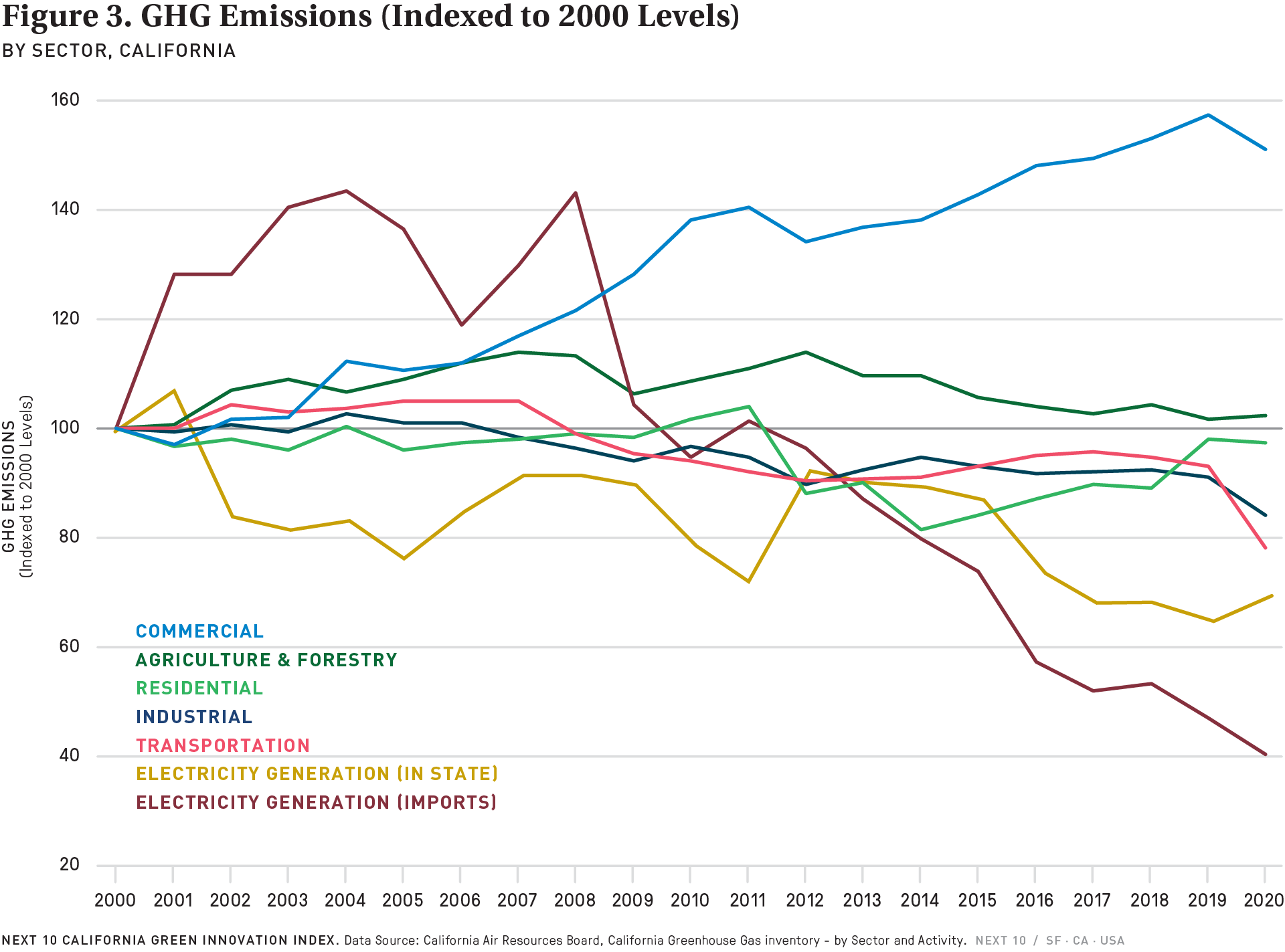Challenge
- The electric power sector has experienced dramatic reductions, down 30.6 percent for in-state generation and down more than half (-59.5%) for imports in 2020 compared to 2000 levels. As the grid becomes cleaner—and threats from natural disasters such as drought and wildfires persist—further emission cuts may become more difficult,13 making the work to reduce emissions from other sector more critical. While GHG emissions in the commercial sector fell from 2019 to 2020, they are increasing in the long-term (+51.2% relative to 2000). In recent years, GHG emissions from the residential sector have also been continuously rising (+15.5% compared to 2015), with the Not Specific14 subsector being the most significant contributor to the increase (+8.6% compared to 2019). Natural gas combustion in the residential sector declined by 0.64 percent over the year. Despite the increase over the last several years, emissions from the residential and commercial sectors were down by 0.66 percent and by 4.13 percent, respectively, in 2020 compared to 2019.
13 The state has approved additional natural gas power plants to come online recently due to electricity shortages. This is discussed in more detailed in the Renewables Chapter of the index.
14 Not Specific is a subsector in the residential sector in the California Air Resources Board GHG Inventory and is not defined.
More About the
Carbon Economy
Related Content

